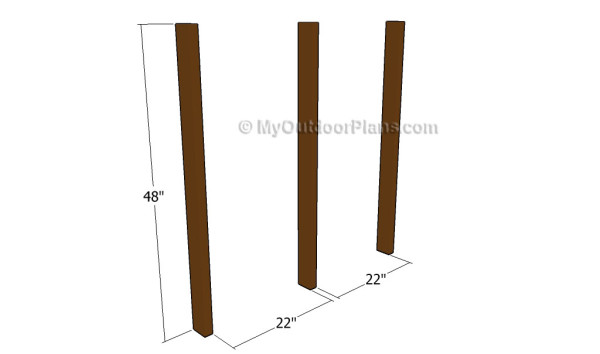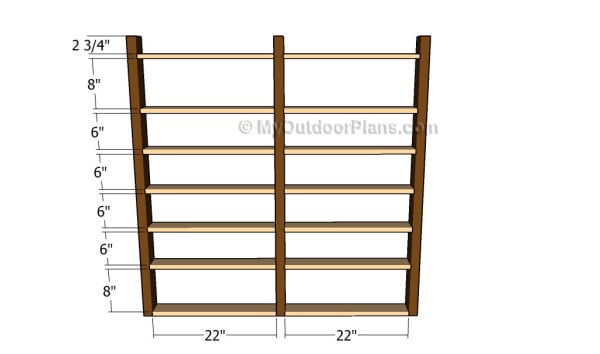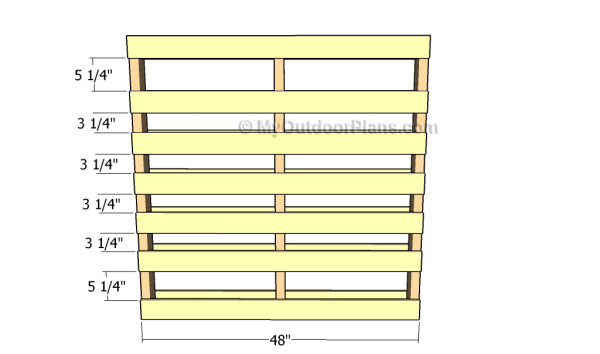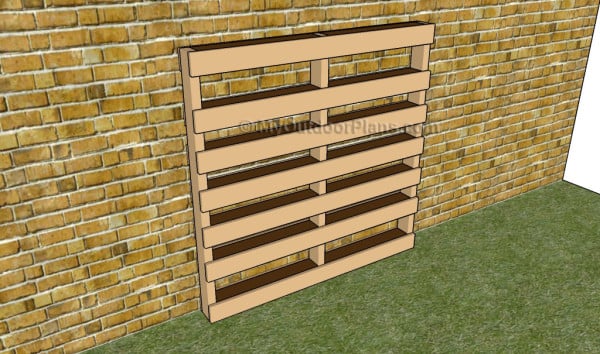This step by step diy project is about vertical garden plans. If you want to grow vegetables in your garden even in the cold season, you should pay attention to this article. the main advantage of building a vertical planter is that it saves a lot of space. Make sure you plumb the components before inserting the screws and check if the joints are really rigid and durable.
There are many plans and designs to choose from, so make sure you take a close look over the rest of the table plans featured on our website. Plan everything with attention and adjust the size and the shape of the table to suit your needs. Plumb the legs and make sure the corners are right-angled before inserting the galvanized screws into place. Drill pilot or pocket holes to prevent the wood from splitting. See all my Premium Plans HERE.
Projects made from these plans
Vertical garden plans

Building a vertical garden
Cut & Shopping Lists
- A – 3 pieces of 2×4 lumber – 48” long POSTS
- B – 14 pieces of 1×4 lumber – 22” long BOTTOM
- C – 14 pieces of 1×4 lumber – 48” long SIDES
- 11 pieces of 1×4 lumber – 8 ft
- 2 pieces of 2×4 lumber – 8 ft
- 2 1/2″ screws
- 1 5/8″ screws
- 1 1/4″ screws
- wood filler
- wood glue
- stain/paint
Tools
![]() Hammer, Tape measure, Framing square
Hammer, Tape measure, Framing square
![]() Miter saw, Drill machinery, Screwdriver, Sander
Miter saw, Drill machinery, Screwdriver, Sander
Time
![]() One weekend
One weekend
Related
Building a vertical garden

Building the vertical supports
The first step of the project is to build the posts for the vertical garden planter. In order to get a professional result, we recommend you to cut the posts out of 2×4 lumber and to lay them equally-spaced on a level surface.

Fitting the bottom of the planters
The next step of the garden project is to attach the bottom components to the support posts, as described in the image. Drill pilot holes at both ends of the bottom supports and secure them to the posts using 1 1/4″ galvanized screws.
Pay attention to the instructions described in the diagram when fitting the bottom supports to posts. Add waterproof glue to the joints and make sure the corners are right-angled.

Fitting the side components
One of the last steps of the project is to attach the 1×4 slats to the sides of the vertical garden. Align the slats with attention and secure them to the posts using 1 1/4″ nails. Add waterproof glue to the joints and leave no gaps between the components.

Vertical garden plans
Last but not least, you should take care of the finishing touches. Therefore, make sure the frames are plumb and equally spaced. Set the vertical garden planter against a wall, as described in the image.
Top Tip: Drill pilot holes the back slats of the planter and secure it to the wall with galvanized screws. Make sure there are no gaps between the components and check if the joints are rigid.
This woodworking project was about vertical garden plans. If you want to see more outdoor plans, check out the rest of our step by step projects and follow the instructions to obtain a professional result.




